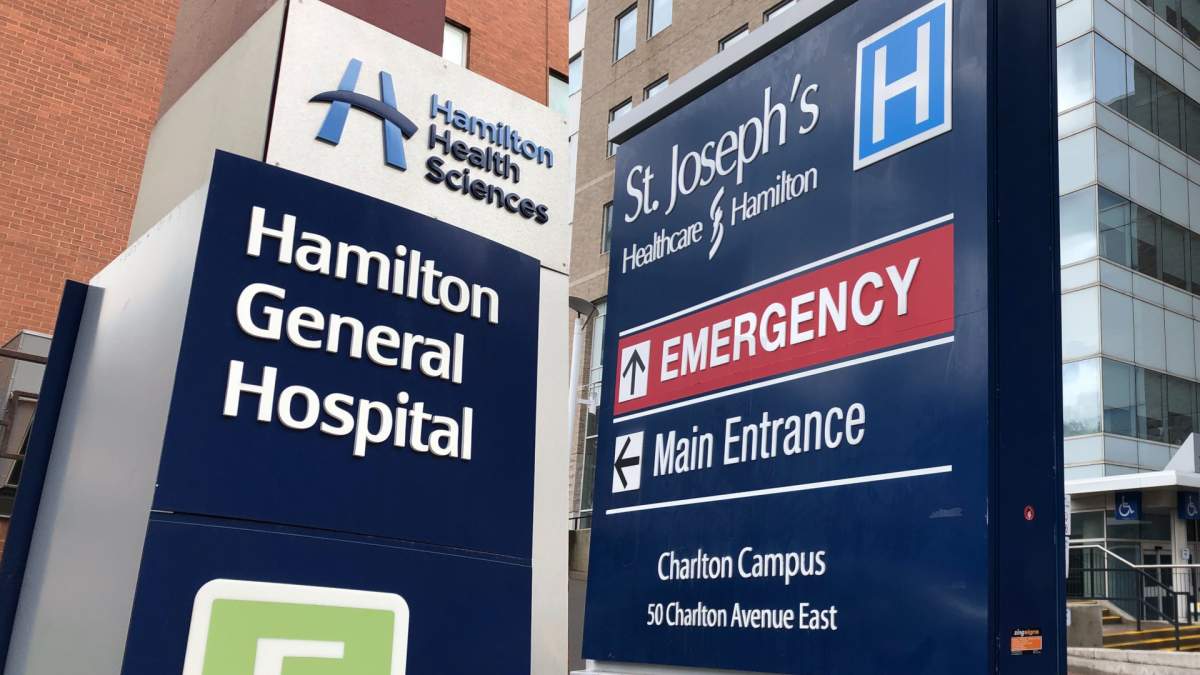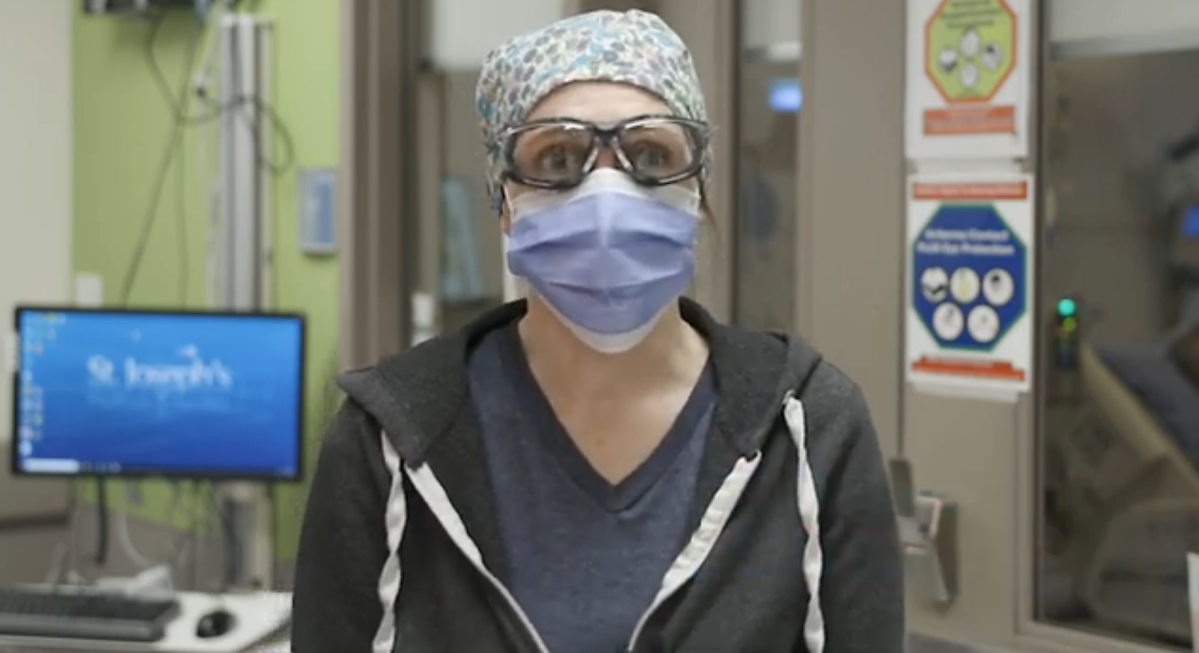A Hamilton nurse now working in an outpatient department at St. Joseph’s (St. Joe’s) Hospital says her hours are good with little “emotional baggage” at the end of her work days.

“The patients come in, have their procedure, go home and have a meaningful existence. I needed those kind of wins in my day-to-day work,” Rachel Janusc told 900 CHML’s Good Morning Hamilton.
The 21-year vet is coming off two of the most stressful years of her career, having been an intensive care unit nurse at St. Joe’s during the heat of the COVID-19 pandemic.
Janusc left that job amid a loss of compassion and excess overtime hours covering hospital staffing shortages, which forced many of her colleagues to either depart from their careers entirely or take stress leave.
“The part that scared me, when I knew I had to leave, was losing my empathy,” Janusc recalled.
“As someone who’s prided themselves on helping people … to get to a point where you weren’t caring about that anymore, it sort of scared me.”
Executives with St. Joe’s and Hamilton Health Sciences (HHS) continue to characterize their current nursing shortage as “untenable,” revealing just over 1,000 vacancies as of Friday between the two networks.
HHS says it has 700 unfilled nursing spots, while St. Joe’s revealed about 360.
Across all sectors, the hospitals combined for around 2,100 total staff vacancies at the end of January.

Get weekly health news
Year-over-year increases in retirements are contributing to those pressures, with HHS saying retirements have increased by almost 30 per cent since April 2022 compared with the same period in 2021.
St. Joe’s is also seeing an increase in retirements, but not to the same extent, roughly a 16.9 per cent increase from fiscal 2021 to 2022.
Janusc said staffing shortages actually began to “evolve slowly” prior to COVID-19 but became “critical” during the pandemic, when nurses began picking up a lot of extra shifts to support co-workers trying to balance work with family life.
“In the aftermath of COVID, like those big surges, everyone was just completely spent,” Janusc said.
“Nurses started leaving, leaving things more short, which then overworked the nurses that were left, which caused more people to burnout and leave.”
On Friday, HHS said its current “inordinate pressures” on patient capacity are due to the ongoing workforce shortages as well as the admission of sicker patients.
In a staff town hall on Thursday, HHS executive vice-president Sharon Pierson characterized the past seven days as a “more pressured week than usual,” once again limiting normal surgical activity.
Adult acute care sites reported patient volumes in excess of 100 per cent capacity on Wednesday – about 10 to 15 per cent higher than the hospital’s accepted standard of 85 to 90 per cent.
ICU occupancy has also increased rapidly in February, particularly at Hamilton General, where occupancy moved from 92 per cent on Feb. 1 to 110 per cent as of Wednesday.
Although emergency department visits have remained stable in the last month, the network is still using 70 unbudgeted beds and has patients in “unconventional” spaces across its sites.
The network also revealed the results of an annual survey, issued last fall, measuring staff engagement in the workplace. Work/life balance, mental health and organizational leadership were the lowest-scoring experiences across some 5,700 workers.
“These were some of the areas we know we have the greatest opportunity to improve,” HHS VP Aaron Levo said in the town hall.
“There is either a degree of high unfavourability or a high degree of neutral sentiment.”
During a Hamilton visit late last week, NDP Leader Jagmeet Singh echoed a similar message to Janusc’s concerns with the state of the system, saying care workers in general are feeling “morally injured” for not being able to deliver the care they know they’re supposed to.
“We cannot do it because we don’t have enough resources,” Singh said.
“So the fundamental solution has to come down to getting more nurses, doctors and health-care workers hired.”
He went on to say the “profit solution” for provincial health care proposed by Doug Ford won’t fix the problem, suggesting more money into privatization will just “steal” workers from the public system for the private sector.
“It’ll only mean longer delays on the public side.”
Meanwhile, an HHS spokesperson told Global News initiatives funded by the Ford government are expected to add nurses to its system, saying more than 140 have registered for an Internationally Educated Nurse (IEN) integration program.
Additionally, 30 people recently completed the Supervised Practice Experience Partnership (SPEP), qualifying newly educated nurses and nurses returning from retirement for employment.













Comments